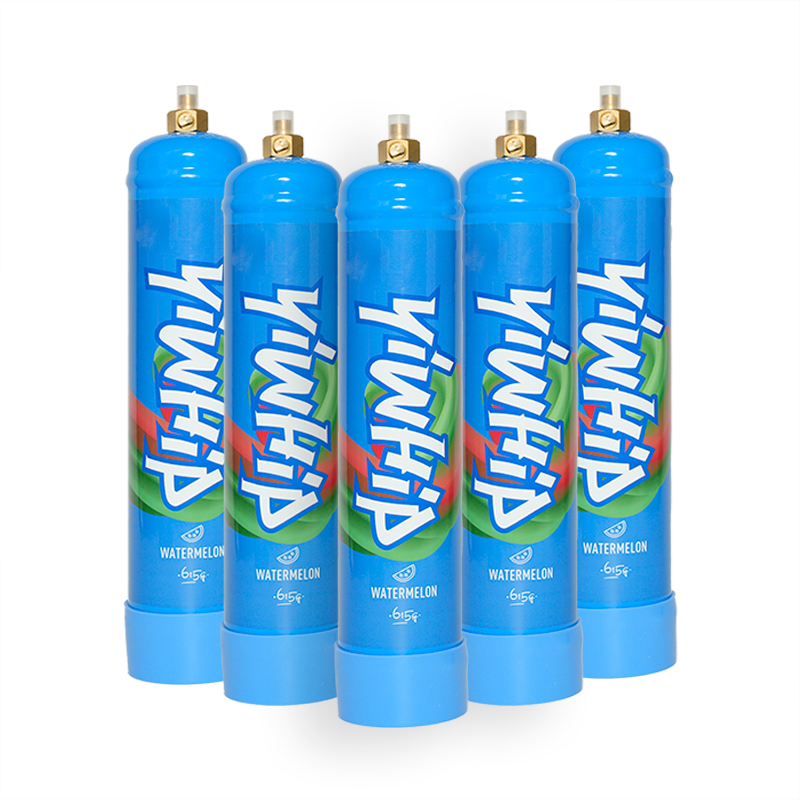The Ultimate Tool for Efficiency in the Kitchen
If you work in the foodservice industry in the U.S., speed and precision are likely at the top of your mind every day, especially when preparing desserts, specialty drinks, or breakfast items. Enter: disposable whipped cream dispensers.
Disposable whipped cream dispensers have become a game-changer in fast-paced professional kitchens. These pre-filled containers allow foodservice workers to apply fluffy, perfectly whipped cream with no effort—meaning no wasted product, reduced prep time, and consistent flavor across all items sold. Unlike their reusable counterparts, disposable versions eliminate concerns about clean up or storage between uses, freeing up valuable equipment space and staff labor hours.
Eco-Friendly Options Are On the Rise
An often underestimated consideration is sustainability. Fortunately, many of today's best disposable whip dispenser products are made using materials that are either 100% recyclable or sourced responsibly from ethical manufacturers. This makes the shift to disposables less environmentally burdensome than in years past, appealing not only to eco-minded restaurants but also meeting standards required by some larger catering or retail chains serving food across the nation’s major cities like Chicago, New York City, and Los Angeles.
You'll now commonly find brands offering BPA-free bottles made with post-consumer recycled (PCR) plastic, helping operators maintain performance without compromise on environmental values. The nitrous oxide chargers themselves are also improving — look into options certified for low carbon impact or recyclable components wherever available.
Suitable for Commercial Use Without Compromise
Many food professionals mistakenly believe that disposable cream dispensers aren't suitable for high-output kitchen settings, especially compared with large stainless steel commercial models that can produce bulk volumes at once. However, advances in technology over recent years show how far these compact units have come.
- Single-serve convenience ensures portions don't sit around and lose quality.
- Easier training — new staff require little guidance before using properly.
- Great for small batch or custom-topped orders popular at cafés nationwide.
- Versatile enough for coffee, sundaes, fruit parfaits — anything a modern menu may need to impress health-conscious, dessert-loving American consumers.
Why Foodservice Providers Prefer Disposables?
In addition to saving time and reducing waste, disposables provide excellent consistency regardless of skill level involved:
'A part-time student employee handling weekend brunch rush? They get just as smooth an outcome using ready-made dispensers as our head pastry chef does during fine-dining service.'
Brands like Reddi-Wip® Pro, MATHONI Chef Series, and others offer restaurant-specific varieties designed to meet USDA guidelines for institutional use, making it simple for procurement departments to purchase compliant products regularly.
Top 5 Considerations When Buying Disposable Cream Dispensers
- Cremage per bottle capacity: Whether it’s for dollop-sized topping or heaped mounds over hot chocolate matters significantly here.
- Flavor compatibility – While classic sweetened dairy cream remains king, newer non-dairy (like oat, coconut), or flavored variations are becoming must-have options to accommodate customers with special dietary needs or trends influencing markets across states such as CA, OR, WA where alternative milk preferences are stronger than average.
- Shelf-life details: Check how expiration impacts inventory turnover planning if purchasing wholesale in bulk packs for hotels or convention venues.
- Supplier flexibility – Make sure your provider works efficiently across regional lines since operations spanning multiple US time zones often face logistics bottlenecks.
- Consistent supplier relationships matter too—finding brands willing to enter contracts, deliver reliable reorder tracking features digitally, or even partner during seasonal demand peaks (think Pumpkin Spice Latte season!).
All of these elements feed directly into cost-efficiency, customer satisfaction scores via third-party delivery feedback forms or local diner surveying methods used widely from Austin’s bustling street carts up through upscale Boston eateries alike. By leveraging disposable solutions tailored for high-volume professional deployment, operators set both back-end teams up for smoother operations, boost productivity margins and reduce equipment-related downtime risks in a sustainable manner fitting within contemporary American foodservice practices evolving across urban centers year-over-year.

